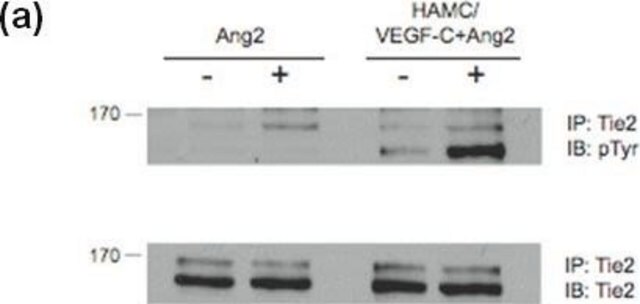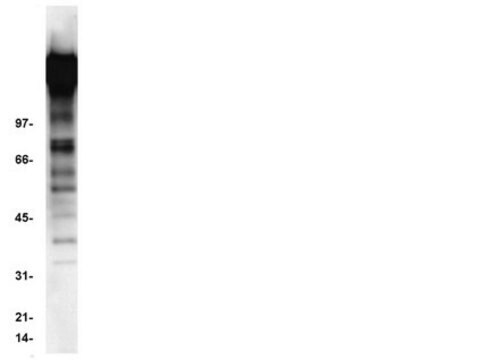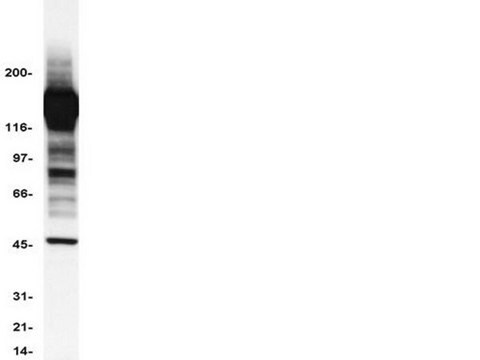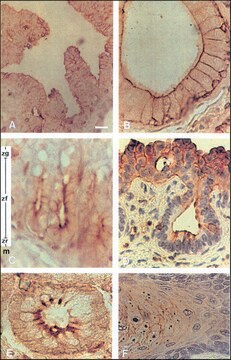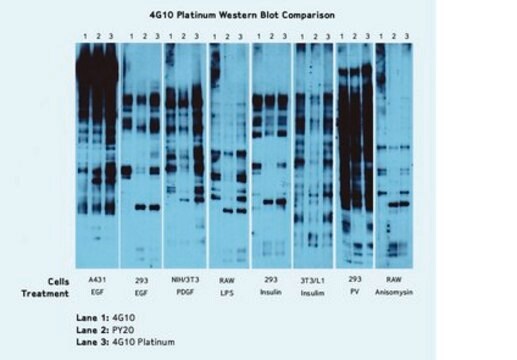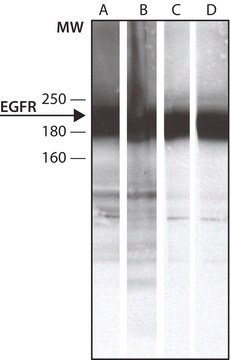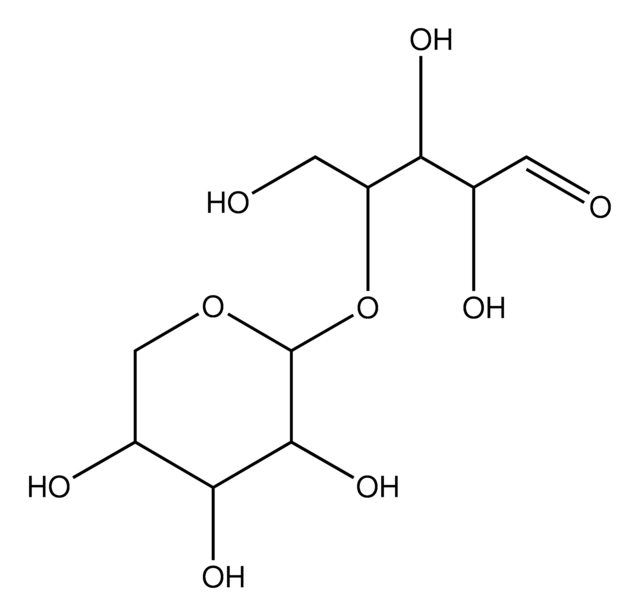16-103
Przeciwciało przeciw fosfotyrozynie, klon 11971, koniugat biotyny
clone 4G10®, Upstate®, from mouse
Synonim(y):
Biotynylowana antyfosfotyrozyna, Klon 4G10 anty-fosfotyrozyna, Przeciwciało biotyny 4G10
About This Item
Polecane produkty
pochodzenie biologiczne
mouse
Poziom jakości
białko sprzężone
biotin conjugate
forma przeciwciała
purified antibody
rodzaj przeciwciała
primary antibodies
klon
4G10®, monoclonal
reaktywność gatunkowa
human
reaktywność gatunkowa (przewidywana na podstawie homologii)
all
producent / nazwa handlowa
Upstate®
metody
immunocytochemistry: suitable
immunoprecipitation (IP): suitable
western blot: suitable
izotyp
IgG2bκ
Warunki transportu
wet ice
docelowa modyfikacja potranslacyjna
phosphorylation (pTyr)
informacje o genach
human ... PID1(55022)
Opis ogólny
Description
Anti-phosphotyrosine monoclonal antibody, clone 4G10 (cat. # 05-321), cross-linked to biotin.
Specyficzność
Immunogen
Zastosowanie
4 μg of a previous lot, used in conjunction with Streptavidin, agarose conjugate (Catalog # 16-126), immunoprecipitated phosphotyrosine containing proteins from a lysate of EGFstimulated A431 cells.
Note: To preserve phosphotyrosine, add 0.2 mM sodium orthovanadate to the lysis buffer.
Immunocytochemistry:
5-10 μg/mL of a previous lot gave positive immunostaining of EGF-stimulated A431 cells that had been fixed with ethanol:acetic acid [1:1].
Application Notes
For use in applications in which a biotin conjugate is advantageous, such as WB and IC.
Signaling
General Post-translation Modification
Jakość
Western Blot Analysis:
1:500 dilution of this lot detected Tyrosine phosphorylated proteins on 10 μg of EGF treated A431 lysates.
Opis wartości docelowych
Postać fizyczna
Przechowywanie i stabilność
Komentarz do analizy
Pervanadate-treated human A431 cell extracts or EGF-treated human A431 cells
Inne uwagi
Informacje prawne
Oświadczenie o zrzeczeniu się odpowiedzialności
Nie możesz znaleźć właściwego produktu?
Wypróbuj nasz Narzędzie selektora produktów.
Kod klasy składowania
12 - Non Combustible Liquids
Klasa zagrożenia wodnego (WGK)
WGK 2
Temperatura zapłonu (°F)
Not applicable
Temperatura zapłonu (°C)
Not applicable
Certyfikaty analizy (CoA)
Poszukaj Certyfikaty analizy (CoA), wpisując numer partii/serii produktów. Numery serii i partii można znaleźć na etykiecie produktu po słowach „seria” lub „partia”.
Masz już ten produkt?
Dokumenty związane z niedawno zakupionymi produktami zostały zamieszczone w Bibliotece dokumentów.
Nasz zespół naukowców ma doświadczenie we wszystkich obszarach badań, w tym w naukach przyrodniczych, materiałoznawstwie, syntezie chemicznej, chromatografii, analityce i wielu innych dziedzinach.
Skontaktuj się z zespołem ds. pomocy technicznej